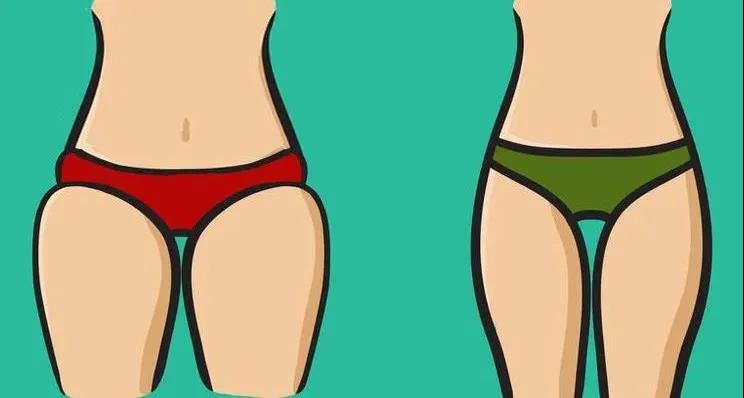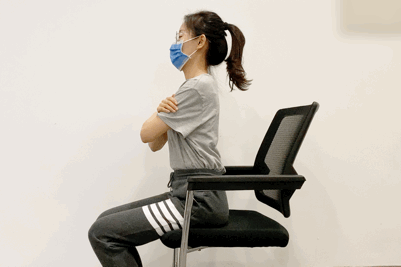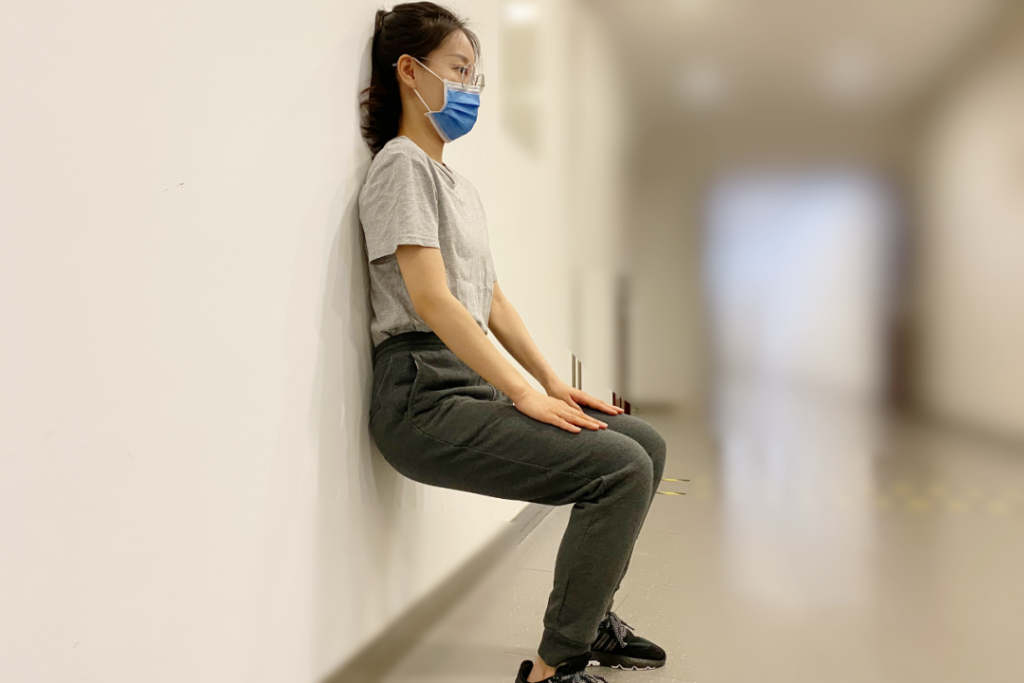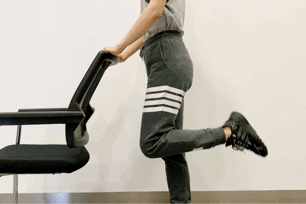
There is a kind of pain called “90 kg of upper body, 120 kg of legs”. Thick legs may be the body problem most people want to improve.

In fact, the meat on the thighs is not useless. A study found that within a certain range of values, people with thicker legs have a lower risk of hypertension.
Leg circumference may be an indicator of high blood pressure
This study surveyed 9,250 Chinese men and women over the age of 40, and recorded their leg circumference and blood pressure data.

The study divided men’s and women’s thigh circumferences into three groups. Men’s thigh circumferences ranged from ≤51.2cm, 51.2cm~55.3cm, and ≥55.3cm, respectively, and women’s thigh circumferences were ≤50.7cm, 50.7cm~54.4cm and ≥ 54.4cm.
The comparison found that for overweight and obese people, the thicker the thighs, the lower the risk of hypertension, while people with smaller thigh circumferences (less than 50 cm for women and less than 51 cm for men) are more likely to increase blood pressure.
Studies believe that this may be related to the stronger metabolism of fat in the legs.

Another study by the American Heart Association analyzed nearly 5997 adults with an average age of 37.4 and found that people with higher levels of leg fat are 61% less likely to suffer from high blood pressure; lower leg fat levels, it means that both systolic and diastolic blood pressure will increase.
Thigh muscles, every piece is useful
The leg is the place where the large muscle groups are more concentrated, and it is also an important part of maintaining the balance of the body. Many movements of the human body rely on the strength of the legs. The stronger the leg muscles, the stronger the stability and balance of the body.
Legs that are too slender tend not to have good muscle toughness. Generally speaking, the suitable range of leg circumference is 46~60 cm.

Muscular thighs not only look more toned, but also bring a series of benefits to the body.
Protect the knee joint
The leg muscles are strong and can provide greater support to the knee joint. Moderate leg muscle strength exercises can not only increase the stability and mobility of the joints, but also disperse and reduce the pressure on the knee joints.
For the elderly, leg strength exercises can slow down the degenerative changes in knee joint function and reduce the possibility of falling.
Prevent osteoporosis
Skeletal muscle is a protective layer attached to bones. If skeletal muscles are developed, bone loss will be reduced accordingly.
Muscle exercise can also stimulate bones, enhance bone density, and achieve the purpose of preventing osteoporosis.
Help control weight
Muscles are the main place where the human body metabolizes calories. With less muscles and low basal metabolism, people are prone to obesity.
A moderate increase in the proportion of muscle will help improve metabolism, reduce fat accumulation, and reduce the risk of various chronic diseases.
Reduce the risk of heart disease
The Copenhagen University Hospital in Denmark found that people with a thigh circumference less than 46 cm have a two-fold increase in the risk of heart disease compared to those with a 60 cm thigh.
Reduce the risk of death
A study published in the British Medical Journal analyzed the health data of over 2.52 million adults and found that every 5 cm increase in thigh circumference was associated with an 18% reduction in the risk of all-cause death.
5 exercises to increase thigh muscles
After the age of 20, the body’s muscle mass begins to decrease gradually. Compared with the upper limbs and trunk, the muscle mass of the lower limbs decreases faster.
An action test thigh muscle strength:
Sit on the front edge of the chair with arms folded, then stand up straight, and then sit down quickly.

Taking a 40-year-old man as an example, he can do it 10 times within 7 seconds (fast) or 8-10 seconds (normal speed), indicating that the muscle strength of the lower limbs can reach the standard of preventing three advanced lifestyle diseases.
If it takes more than 11 seconds, it indicates that the muscle strength of the lower limbs is degraded more, and targeted exercise is required.
If the lower limb strength is insufficient, you can try this set of exercises for the thigh muscles.
01. Squat against the wall
Stand with your back against the wall, move your feet forward about a step, press your back against the wall, and bend your knees until your thighs are parallel to the floor and 90 degrees to your upper body. Maintain this position for 60 seconds.

Maybe you can only hold on for a few seconds at first, you can try to extend the training time slowly. If you are unstable, placing your arms on the wall will help you maintain your balance.
This training is done 3 times as 1 group, and it is recommended to practice 2 groups every day.
02. Leg curl
Stand behind the chair and bend your left foot, turn your left heel toward your butt, and maintain your posture for a while. Then, slowly return your feet to their original positions.

Repeat the above action 10 times, changing legs. Do 30 curls for each leg at a time. In order to increase the challenge, you can also load appropriately.
03. Standing leg lift
Stand still, hold both sides of the chair with both hands, keep your back straight, lift your left leg up and return to the original position 10 times, then change your legs. It is recommended to lift each leg 100 times during each training session.

04. Squat
Separate your feet and hip-width apart, lift a dumbbell or a mineral water bottle filled with water in front of your chest, squat down with your elbows, bend your knees, and then return for one time.

When squatting, make sure that your knees do not exceed your toes.
05. The elastic band runs horizontally
Place the elastic band above your ankles, with your feet hip-width apart, and your knees slightly bent. Tighten the core muscles, move the left foot to the left first, and then follow the right foot, then move 2 to 3 times, then switch to the other side and do the same movement.

This action and the previous step of squat, each action is done 3~4 sets, each set of 10~12 times, rest between sets for 30~60 seconds.
If you feel knee pain during the above exercises, you should stop immediately. The next time you practice, you can start with a lower difficulty and less training volume.
Comments